The following 17 individual images came from my studio between August 2012 and September 2013. 15 of these images appeared in an exhibition titled 3 Short Stories & 12 Options at William Campbell Contemporary Art in October 2013. Because of the compacted time-frame there are a number of threads which run through these works for they continued to inform each other over the course of that year. Below is part of the press release written by Elizabeth L. Delaney for my exhibition. It clearly and concisely weaves together many of the overriding issues which continue to attract me and notes some tangents that spin off from these issues.
You may click on any smaller image for title, dimension and media. The works in this post are grouped more by "series" rather than by date of execution.
3 Short Stories & 12 Options Elizabeth L. Delaney September 2013
3 Short Stories and 12 Options comprises work made as a result of Dixon's most recent trips to Texas' South Llano River, where he has traveled intermittently over the past thirty years, and to the Hudson River region, which he has visited regularly for the past decade. Especially embracing the environmental and historical significance of these areas, the artist captures their iconic landscapes, though not in the traditional sense. Dixon's landscapes have been processed through physical and emotional filters, dissected, layered, and re-constructed. In this manner, he calls attention to the effects of humankind and technology on the environment and on the artistic process. The result is a delicate -- at times unnerving -- symbiosis of hand-constructed and machine-made, natural and material, which he refers to as a discussion among "the luminosity of light, the grandeur of space, and the corrosive effect of human culture and modern technology…"
Dixon's artwork is based in a complex process that includes an amalgamation of media and means. Wood surfaces are randomly engraved before the painting ever begins, creating texture and referencing the ever-present subatomic action (chaos) below the surface. Digital photography and painting coalesce as he shoots elements of the landscape, then projects those images onto the support to be painted by hand and retranslated once again. He builds additional texture and dimension through collage, using torn paper often taken from digital photos of his woodcut prints. Additionally, Dixon's ongoing study of human origins, mechanics of the brain, ornithology, and the natural and physical sciences constantly informs his work, transforming an otherwise visual engagement into a thought-provoking commentary about contemporary culture.
Dixon's artwork is based in a complex process that includes an amalgamation of media and means. Wood surfaces are randomly engraved before the painting ever begins, creating texture and referencing the ever-present subatomic action (chaos) below the surface. Digital photography and painting coalesce as he shoots elements of the landscape, then projects those images onto the support to be painted by hand and retranslated once again. He builds additional texture and dimension through collage, using torn paper often taken from digital photos of his woodcut prints. Additionally, Dixon's ongoing study of human origins, mechanics of the brain, ornithology, and the natural and physical sciences constantly informs his work, transforming an otherwise visual engagement into a thought-provoking commentary about contemporary culture.
Throughout the layers of paint, paper, and carved-out wood, Dixon presents overt and subtle evidence of a pristine environment diminished by modern practices. The whimsically titled Rock, Paper, Scissors belies its initial playfulness to address environmental issues, in particular the haphazard way we regard our natural resources. The hard lines of the paper frame the photorealistic scissors as they float atop loosely gathered organic rocks and water -- both a visual and psychological blockade. Also an element of perceived, manufactured order, they interrupt the organic process underneath. The push-and-pull created by this arrangement evokes ideas about definitions of order and chaos in our environment, where each begins and ends, and how one might be masked as the other.
Order & Disorder: Common Denominator exemplifies Dixon's interest in the digital interpretation of the physical world. Here, the traditional landscape scene is neatly cropped and framed, compartmentalized and controlled. Meanwhile, digitally created, re-translated landscape details and design elements seep out from behind the disparate puzzle pieces looking for their mates. Mechanically uniform yet abstract, they create a sense of chaos, undermining the unblemished, ordered landscape central to the piece. This interaction sets up a dialogue between nature and technology, leaving the viewer to contemplate how the two interact and whether the natural order can be maintained amid the chaos of modern progress.
fftn: In July 2012 I taught on the same acreage in the Texas Hill Country which I had visited regularly for the past 35 years. I was eager to see and photograph the water patterns in what I knew to be the swift, romping water of the S. Llano River. But due to the effects of erosion , silting, and the current drought, the river had no energy and could not create the swift flow around and over rocks needed to create the type of water patterns I was used to seeing and hoping to capture digitally. I complained to a colleague, a photographer, about my disappointment. She looked at me in astonishment and in one quick breath said, "Oh, for God's sake, Ken, make your OWN rapids!" I spent several days throwing (aiming) various size rocks back into the narrow shallow areas of the river in order to photo the jumping, swirling action of water cutting its path downhill.
See the posting on this site from September 2012 "Connecting the Dots" if you are interested in the origins of the Hudson River School references in my work. The da Vinci references come from da Vinci's notebook studies in hydrology, and the resulting patterns created from water flow. I found an old exhibition catalog on da Vinci drawings at Larry McMurtry's "book mall" in Archer City, Texas in the spring of 2012 and was so impressed with da Vinci's clarity of vision (without the aid of digital photography!!) that I scanned some choice details and replicated them, in several works with ink and pencil, on the painted illusions of folded white copy paper.
FYI: The textures in "Wing Patterns (Cropsey Niagara)" and "Wing Patterns", below, come from digital photographs my partner and I took while observing bird banding at the Idaho Bird Observatory on Lucky Peak above Boise (Red Tail, Cooper's and Sharpshinned hawks). Wood-block printed and computer-printed images were made from these photos and printed on rice paper. They were then torn/cut and colaged onto a primed wood surface. In these two works the entire surface of the wood was colaged first. Then this collage was disrupted with a wood-carving tool or with acrylic overlays which are used to create borders or the areas of illusionistic "taped-on" sheets of copy paper.
What the posted image may not reveal...
Collage elements include: images printed on rice paper or cotton vellum paper with a wood-block or a computer; textured surfaces built from cut and torn 67lb. cotton vellum; acrylic washes or heavy paint over paper areas.
The top unit is engraved with wood carving tools and "inked -up" with a roller and black acrylic.
Three-dimensional (large relief white flowers and the 3-D still-life bouquet) elements are carved from bass wood and painted with acrylic.
The surface beneath the detail from Frederic Church's "Niagara Falls" is heavily engraved.
The milagros on the right-hand unit are carved in relief or etched into the wood surface (heads, hearts, hands, eyes, hummingbirds).
The flashlight (which can also appear to be a rocket) on the navigational sky-chart is carved from bass wood and painted with acrylic.
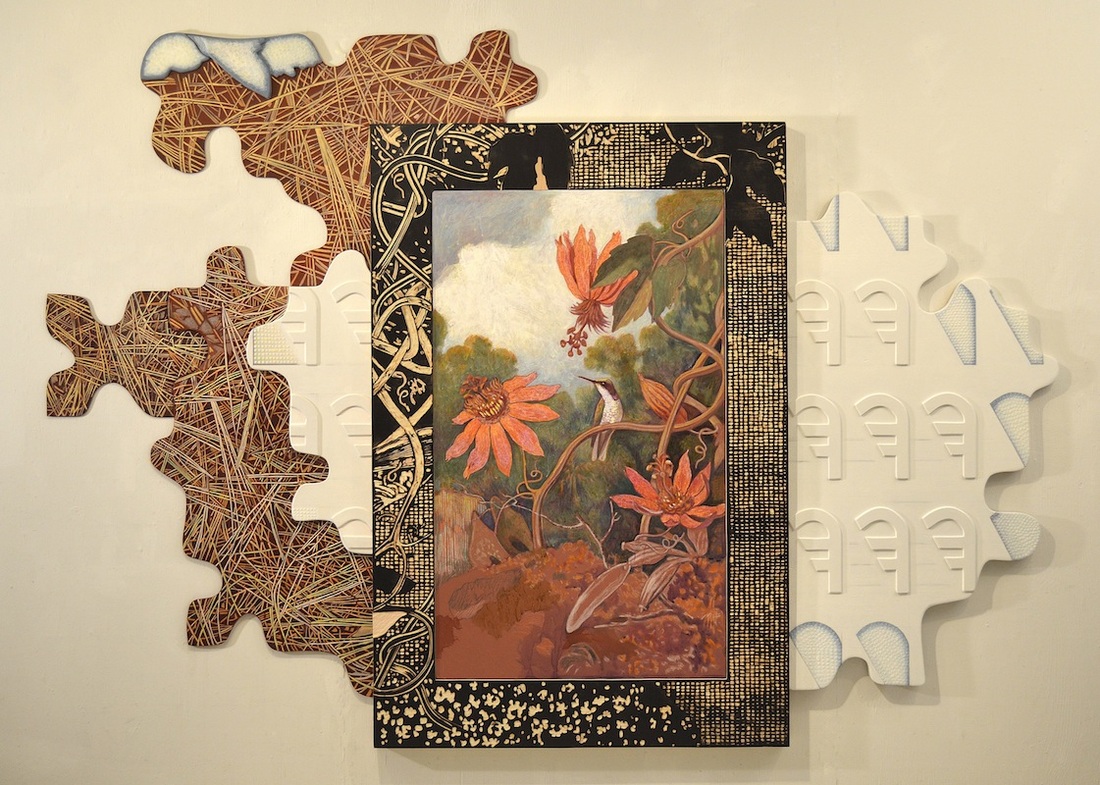
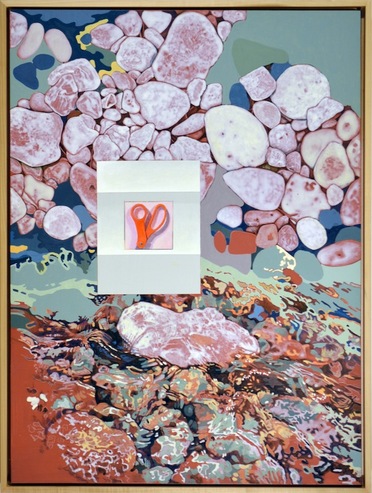
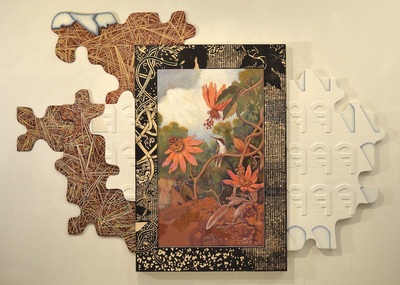
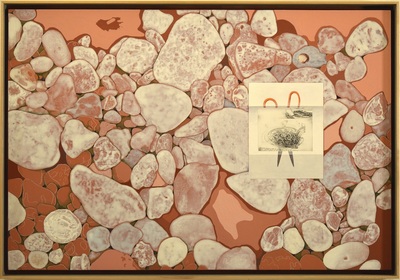
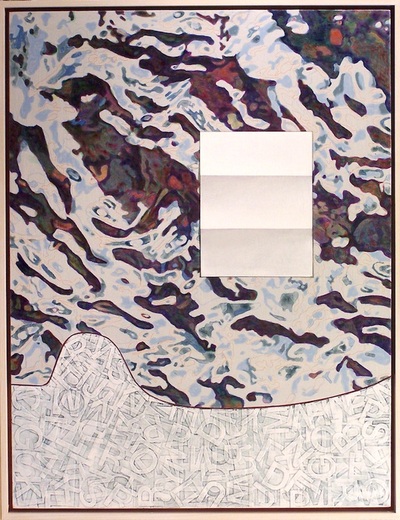
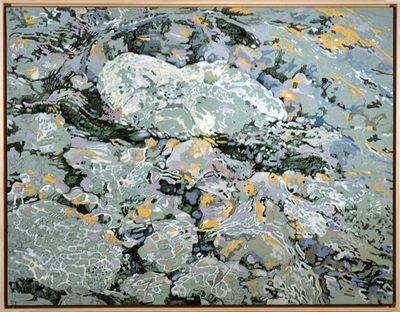
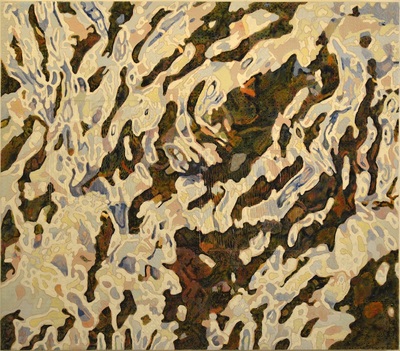
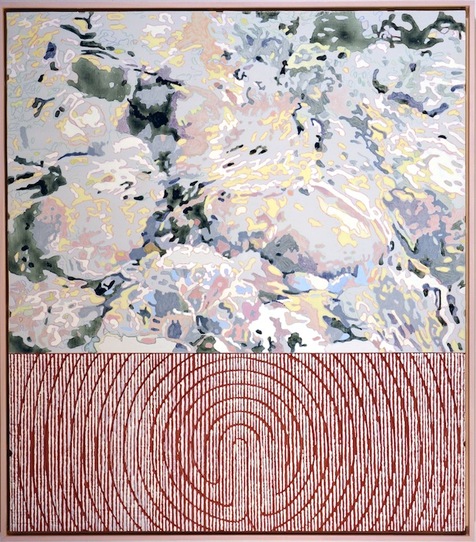
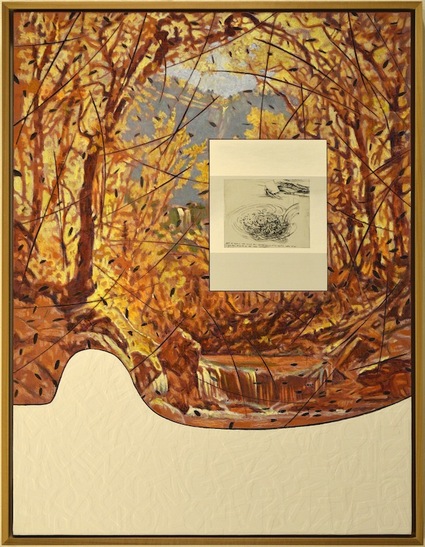
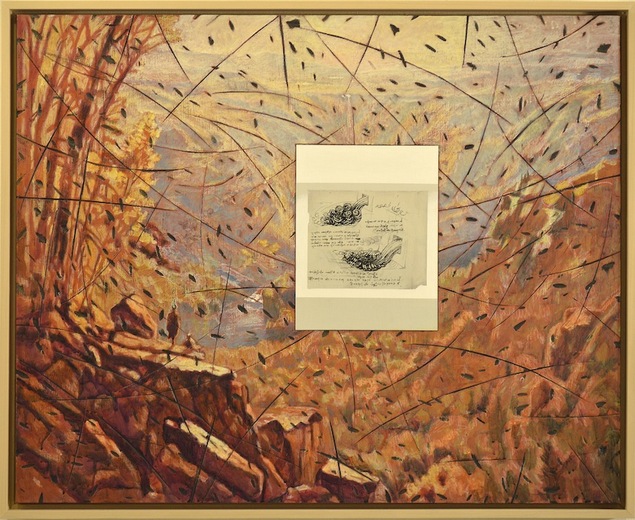
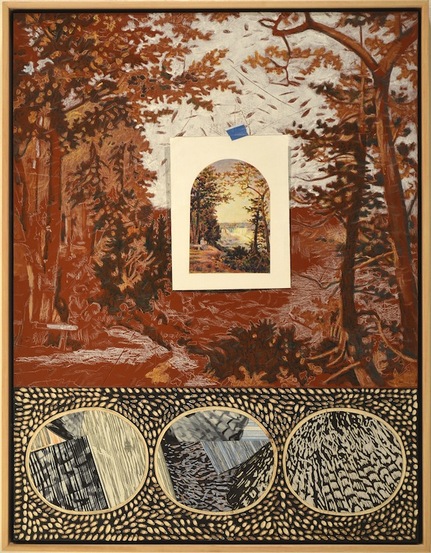
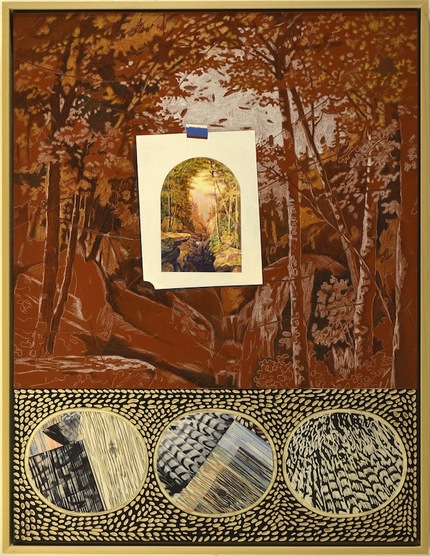
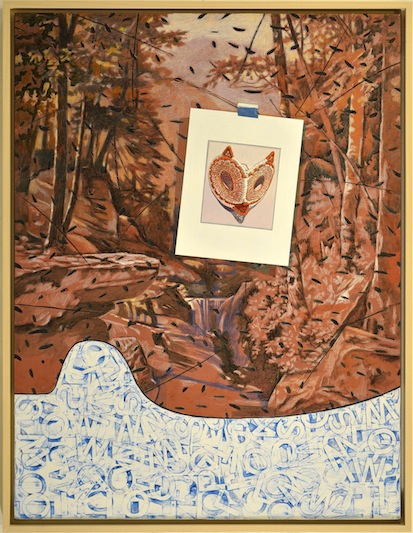
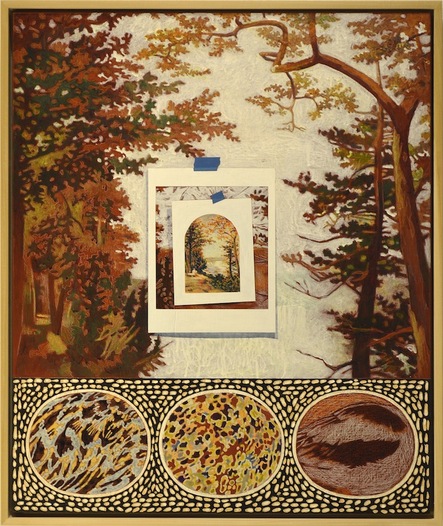
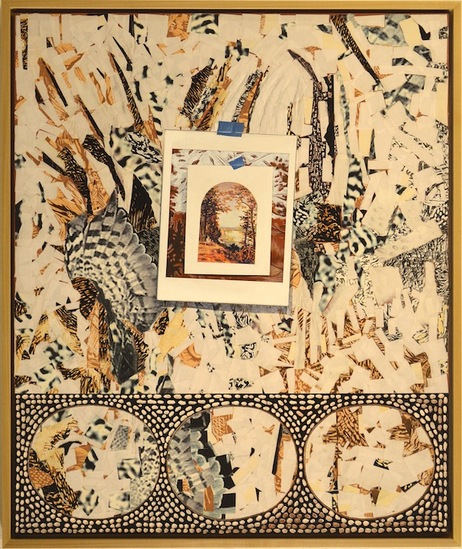
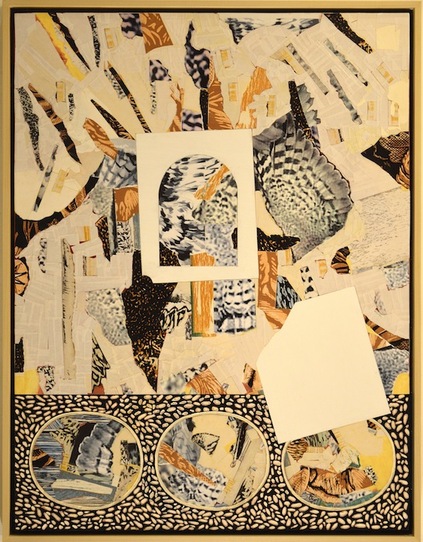
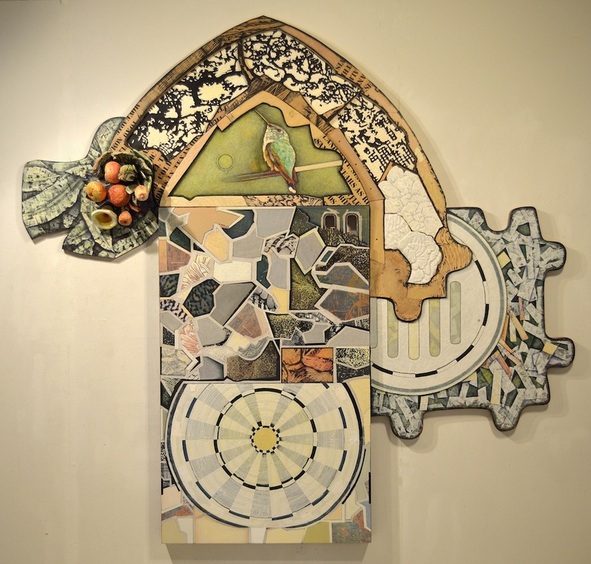
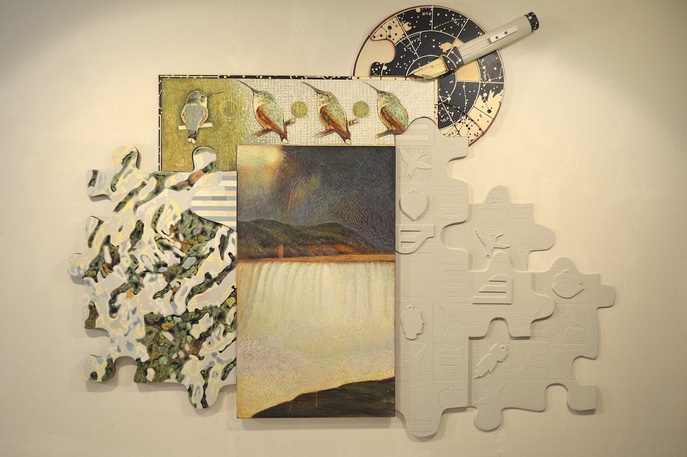
 RSS Feed
RSS Feed